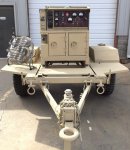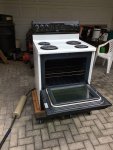I will help revive this old thread as I conjure up a way to build a load bank. My needs will be to load test and run a MEP-803AHow about using an electric clothes dryer?
Could you take the elements out of the dryer and cool them with a good old box fan.
Thinking about it You could connect two fans together and put the elements in one and yous the other for cooling.
Reason I quote quickfarms here is in my brain storming I came across some clothes dryer elements that are reasonably priced but most if not all seem to be in the 5400W 240V variety. I would like to go with an air cooled design but I'm not sure I would get the desired results with these. My initial thoughts are a duct with 3 of these elements powered through a breaker panel and use breakers as switches. I would install a fan to blow over the elements and they can double as outside heat if I'm working near the generator. It would seem two of these should be a good long run test for burning out the exhaust but I'm thinking 3 of them should be overload. If I go this route I will probably get two and add a couple of 1500W space heaters.
Another thought for resistive heating elements is the auxiliary heat strip kits for heat pump systems. Those cost a bit more but are available in a variety of sizes starting around 3Kw and going as high as 20Kw. Having a 3Kw and two 5Kw sets of these might make a better tester for the 10K generator.
Last edited:




